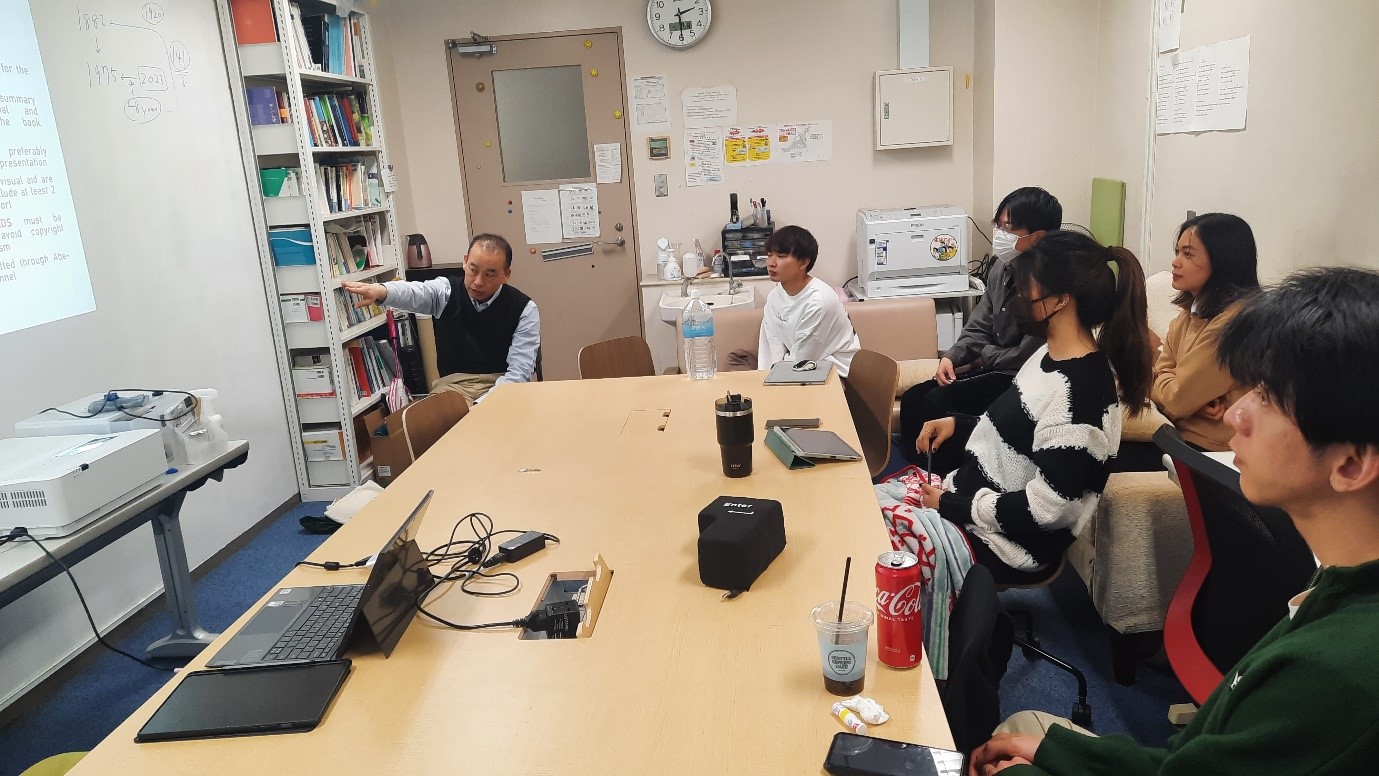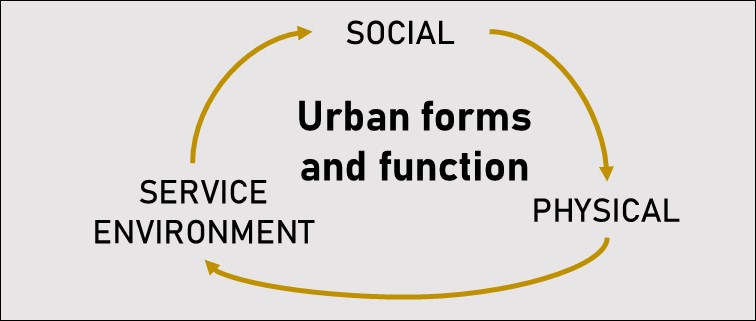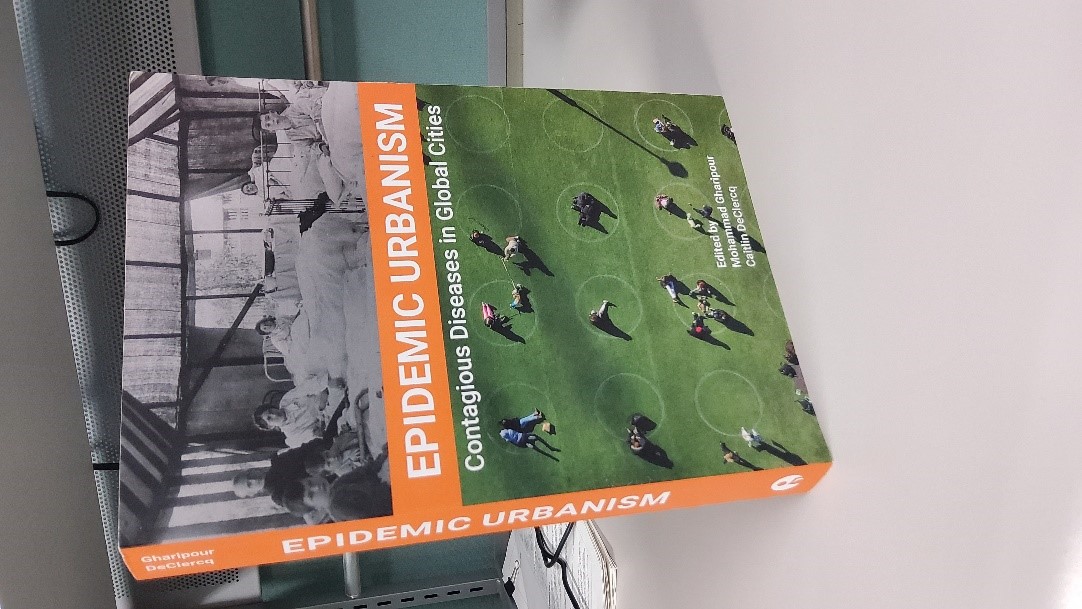Presenter : Radhitiya Al Furqan
Date presented : April 17th 2023
Part presented : Introduction
Hello everyone, Radi here!
This semester, Abe-lab members will do the book review again. This time, we will review the book titled “Epidemic Urbanism – Contagious Diseases in Global Cities” by Mohammad Gharipour and Caitlin DeClerq (editors). This book is a compilation of historical studies on how epidemics in the past affected and changed various aspects of human life, especially in the urban context. We believe that this book is relatively relatable to the current global situation considering the COVID-19 pandemic and diverse urban issues faced by cities around the world now. Another thing that we find interesting about this book is the transdisciplinary approach it uses since this book was written by authors with different backgrounds (e.g. historians, public health experts, art and architectural historians, sociologists, anthropologists, doctors, and nurses). This transdisciplinary approach is in line with Abe-lab’s research theme and our department.
In this first part, we presented the introduction of the book and discussed the relevance of this book with Abe-lab research activities and how the COVID-19 pandemic affects Abe-lab members’ research topic. Lastly, hope you enjoy reading through this semester’s book review!

Fig 2. Discussion session in the book review
Introduction of the book
The Epidemic Urbanism book is a historical study with an interdisciplinary approach involving authors from different disciplines of knowledge. It is a compilation of study cases from cities around the world, ranging from the 14th to the 21st century. Reflecting on past epidemic experiences, this book expects to give more understanding of how mankind can respond to the current COVID-19 pandemic and future epidemics more effectively and equitably with a responsible and thoughtful approach.
As the title suggests, this book focuses on the urban context/ city level. A city is where people congregate, resulting in a direct correlation to the spread of infectious disease. A city is also a place where a high diversity of social and economic structures can be found. This aspect also affects the spread of infectious diseases and got affected by them
Urban forms and functions are described by the following 3 elements; social, physical, and service environment. These elements were mainly affected by past epidemics and changes can be investigated. This book investigates the effect of past epidemics on these 3 elements in various cities around the world, divided into 4 different chapters focusing on urban governance, urban life, urban infrastructure, and urban design and planning.

Fig 3. Elements of urban forms and function
(source: modified from Epidemic Urbanism 2021)
The first chapter is urban governance: politic and management. This chapter discusses about the role of policy, official responses, and government perspective on epidemics considering the uneven social structures. The second chapter is urban life: culture and society. This chapter discusses about the public and unofficial responses to epidemics. It also examines the interventions of epidemics to social and cultural aspects. The third chapter is urban infrastructure: permanence and change. This chapter discusses about the urban infrastructure’s (physical and systems) creation, mobilization, and modification responding the epidemics. The fourth and last chapter is urban design and planning: interventions and implications. This chapter discusses how epidemics changes the urban design and concepts after the intervention and the implication on the social and built environment.
Discussion 1: Relevance with Abe-lab research
In line with the introduction part, during the discussion, we came to the conclusion that this book is related to Abe-lab research, especially in the history and the multidisciplinary aspect. The history aspect becomes one of the most critical aspects that need to be understood in Abe-lab as it shows the past experience of an issue and how humans responded to that issue, hence it provides a historical background for an issue.
On the aspect of multidisciplinary, it is related to the Abe-lab since the Abe-lab itself embraces the concept of multidisciplinary/ transdisciplinary in its research theme as shown by the diverse theme of members’ research topics. We discussed even though the theme of this book (epidemic and disease outbreaks) is not specifically related to our research field, the multidisciplinary approach this book uses could provide an understanding of how an issue can be discussed and investigated from many different perspectives.
Discussion 2: COVID-19 effects on Abe-lab member’s research topic
There are 5 related research fields that we discussed in this session, which are solid waste management, disaster management, electrical engineering, economics, and eco-tourism field. In the solid waste management field, the COVID-19 pandemic increases the generation of medical waste, plastic waste, and single-use type product waste. In the disaster management field, the urgency of the COVID-19 response forces a compromise to other important aspects that need to be addressed, including disaster management. Another thing, especially in a disaster-prone location, the COVID-19 pandemic and disaster occurrence will cause a heavier burden to the location and people that live in that location. In the electrical engineering field of research, the COVID-19 pandemic limits access to the collection of primary data by doing a site visit, especially for locations with limited available data, e.g. rural areas. In the economic and eco-tourism research field, the COVID-19 pandemic especially affecting the income of the people.
Reference
Gharipour, M., & DeClercq, C. (Eds.). (2021). Epidemic Urbanism: Contagious Diseases in Global Cities. Intellect Books.
